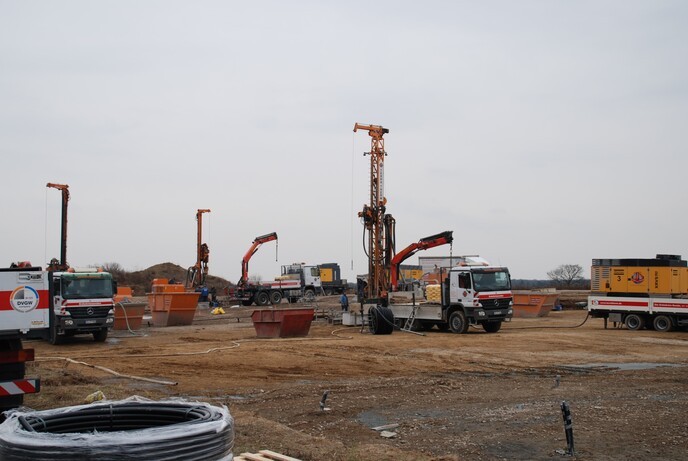New materials for (cost-) efficient geothermal energy systems in buildings
Photovoltaic panels are easily the first power sources coming to mind when considering renewable energy options. But there is an outsider that’s increasingly making noise in the sector: geothermal energy. With almost EUR 4 million of EU support, GEOCOND aims to turn this potential into reality. The project Consortium has been working on shallow geothermal energy systems (SGESs) for buildings since May 2017, which is easily understandable in light of their tantalising promises. “SGESs have very interesting features. They are electric-driven (heat pump), boast the highest possible efficiency (most convenient thermal source) and can serve heating, cooling and hot water simultaneously. Besides, they are highly integrable into buildings, can be combined with other RES thermal or electric sources, and are a proven and robust technology with the lowest maintenance costs,” says Javier Urchueguia, Professor at the Polytechnic University of Valencia, GEOCOND coordinator. There is only one issue. So far, SGESs have been struggling to attract end users, one of the reasons being its high initial cost. GEOCOND is one of several projects aiming to overcome that obstacle, specifically by formulating new materials for future SGES installation. “SGE has traditionally used materials such as PE-100 that were not specifically aimed at this application. This implies that their use for SGE is far from optimal. Big plastic suppliers were not interested in producing new compounds, probably because the scale of the market is still too narrow. This is why an initiative such as GEOCOND was required,” Urchueguia explains. GEOCOND’s research covers four key elements at the heart of SGESs: plastic pipes with improved conductivity, grouts with enhanced characteristics in different sizes, new materials to store heat, and new materials increasing the capacity of the surrounding ground to transfer heat. The project is now in its final year, and the list of outcomes is already promising. Among other things, the Consortium has proposed a new geometry to improve thermal efficiency, as well as a new algorithm for material optimisation considering thermal, energetic and economic variables.
Higher conductivity at lower cost
The project’s new plastic compounds multiply the conductivity of PE-100 by a factor of three, all this while maintaining mechanical properties and other critical specifications related to weldability and manageability. “New plastics have been also developed for other geometries like coaxials,” says Urchueguia. “Moreover, we have managed to produce a new family of grouting compounds with improved specifications that have been tested in real-world conditions with excellent control of their properties; and we have developed an improved system of grout and phase change material mixtures to enable underground thermal storage at different temperature levels.” The project team is now focusing on its three pilot plants which should soon be in operation. To be considered successful, these pilots must provide critical information to confirm the benefits brought by GEOCOND to improve SGESs with regards to lower cost and higher efficiency. “The companies in the Consortium are interested in pursuing the exploitation of the GEOCOND technologies which are at quite a high TRL level, especially the grouts and the plastics. A 1 or 1.5-year follow-up and upscale project could be enough to reach the requested market maturity for these products,” Urchueguia concludes. Together with other projects aiming to solve other problems affecting SGESs – such as the lack of training, appropriate legislation and other technological limitations – GEOCOND is well on track to play a key role in democratising geothermal energy for future buildings in Europe.
Keywords
GEOCOND, SGES, geothermal energy, buildings, new materials, PE-100, conductivity, pilot plants







